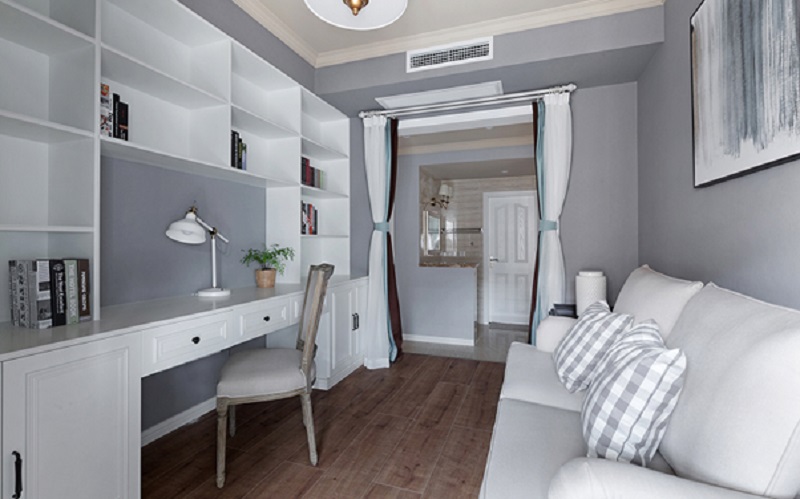
It’s no surprise that interior design in Singapore is undergoing its transformation. Homeowners are thinking differently about their spaces. Offices are rejecting the cold corporate look. Cafés double as workspaces and social hubs. This growing shift towards purposeful, aesthetically refined living has turned interior design from a luxury into a near-necessity. But what’s fuelling this change? And how are today’s interior designer companies in Singapore stepping up to shape the places where we live, work, and gather?
What’s Trending in Singaporean Interiors
There was a time when Singapore’s interior styles followed a familiar script: glossy marble floors, muted beiges, and minimalist furniture that prioritised function over personality. Today, the script is being rewritten. Design trends are becoming bolder and more nuanced.
One of the standout movements in interior design in Singapore now is personalisation. It’s about whether a space looks good and whether it feels like you. That means more homeowners are working closely with designers to incorporate heritage pieces, bespoke storage solutions, or colour schemes that reflect their lifestyles.
Sustainability is another rising factor. From upcycled furniture to low-VOC paints, clients are actively seeking eco-friendly materials. Local interior design firms are also responding with green certifications and responsible sourcing. It must also align with the values of its inhabitants.
How Interior Designers Are Rethinking Small Spaces
Given Singapore’s space constraints, the challenge for any interior designer company in Singapore lies in balancing beauty with efficiency. Whether it’s a 3-room flat or a compact studio apartment, the goal is the same: to create more from less.
Today’s designers approach small spaces with big ideas. Hidden storage is seamlessly built into staircases, bay windows transform into reading nooks, and sliding partitions for a single room to take on multiple functions. Instead of fighting the square footage, these professionals reimagine how each metre can support daily routines.
Even office interiors are getting smarter. The post-pandemic shift has brought flexibility to the forefront, and designers are now crafting spaces that allow hybrid work setups. Desks become movable pods, walls double as writable surfaces, and lighting is zoned for both productivity and calm.
Making the Case for Hiring an Interior Designer
It’s easy to assume that hiring a designer is something reserved for luxury condos or boutique cafes. But in reality, collaborating with a professional can save time, money, and a surprising amount of stress.
Renovation projects here are governed by regulations, permits, and timelines that can quickly overwhelm first-timers. A reputable interior designer company in Singapore acts as both a creative guide and a logistical anchor. They know how to work with contractors, source materials quickly, and plan around BTO or resale flat restrictions.
More importantly, a designer brings a trained eye for cohesion. It’s one thing to pick out a sofa and another to ensure that the sofa harmonises with your lighting, flooring, and lifestyle needs. Many Singaporeans end up overspending by trying to DIY their renovations, only to rework the same elements months later.
What to Expect When Working With a Designer
So what does the process look like when working with an interior designer? It typically begins with a consultation where your lifestyle, space measurements, and aesthetic preferences are discussed. This is followed by design proposals, usually including mood boards, layout options, and material samples.
From there, you’ll receive a cost breakdown, often split into design fees, furniture, labour, and materials. Reputable interior design companies in Singapore are transparent about pricing and timelines, with project management included as part of the service. That means they’ll oversee the renovation from start to finish, coordinating with electricians, carpenters, and vendors to ensure things go smoothly.
Throughout the process, communication is key. Good designers involve you at every step, explaining decisions and welcoming input. The best projects happen when there’s a collaborative spirit between the client and designer.
In terms of timelines, most residential projects take between eight weeks and three months depending on scale. Delays can happen due to material shortages or unforeseen site conditions, but with a professional team, they’re managed proactively.
Working with an interior designer is less about delegating taste and more about shaping your space with someone who understands how to make it come alive.
Interior Design in Singapore Is Evolving—Are You In?
From the HDB corridors of Tampines to the showrooms of Dempsey Hill, interior design in Singapore is entering a dynamic new phase. Homeowners are demanding more function, more flair, and more meaning from their spaces, and designers are responding with creativity, care, and cultural relevance. It is an investment in better living, smarter space usage, and a more intuitive relationship with your home or workplace.
So, if your four walls are starting to feel more like a box than a home, maybe it’s time to think outside it. Consult with Interior Times today.